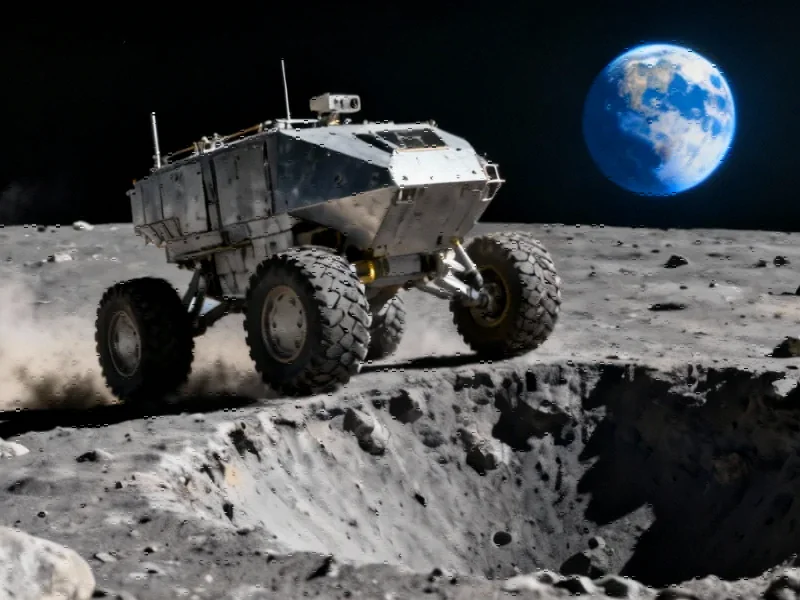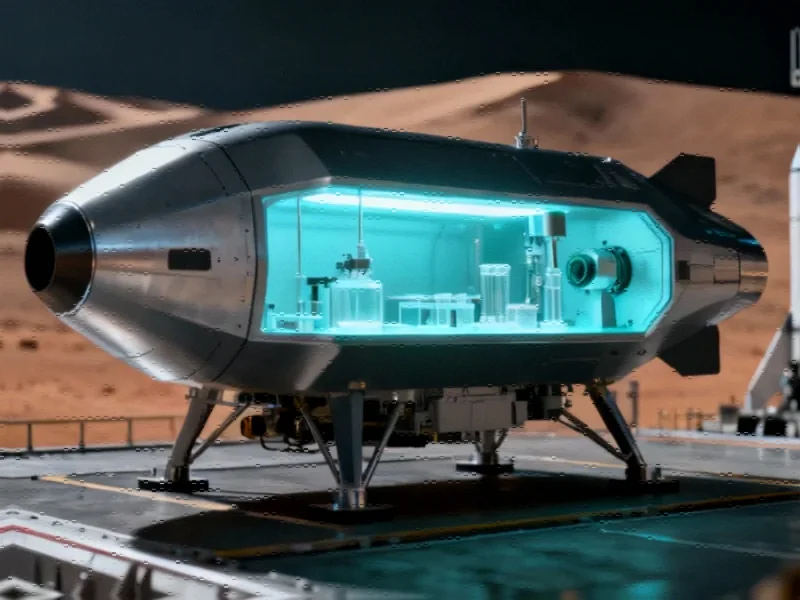NASA’s Lunar Rover Selection Process Enters Final Phase
According to reports from Kennedy Space Center, NASA is preparing to select a commercial provider for the next generation moon rover that will support Artemis missions. Sources indicate the space agency narrowed the competition to three teams more than 18 months ago and is expected to make its final decision by mid-November following extensive prototype testing.
Competing Rover Designs Showcase Innovation
The report states that three companies have completed a series of tests to demonstrate their capabilities for the Artemis program. Lunar Outpost recently displayed its Eagle prototype at Kennedy Space Center Visitor Complex, featuring a sci-fi inspired design with a unique open front cockpit that analysts suggest improves visibility and accessibility. The company, which partnered with NASA through its Lunar Dawn team, has collaborated with Leidos, General Motors, Goodyear and MDA Space.
According to Lunar Outpost Chief Technical Officer A.J. Gemer, the design prioritizes both functionality and inspiration. “I’ve always been passionate about good design. I think that’s important in everything, and certainly in space,” Gemer stated. “That’s what inspires the next generation, hooks them and makes them want to be a part of it.”
Comprehensive Testing and Astronaut Feedback
Sources indicate that all three competing rover designs underwent rigorous evaluation at Johnson Space Center in late 2024. NASA astronauts wearing spacesuits tested mockups while attached to apparatus simulating the moon‘s one-sixth gravity environment. The report states astronauts provided thousands of feedback points regarding controls, handholds, field of view, and cockpit accessibility.
Gemer noted that the Eagle prototype evolved significantly based on this feedback, resulting in “a very clean cockpit that gives the crew excellent visibility. It’s very safe. It’s easy for them to climb up into — good hand holds — turn around, position themselves in their seats, and interact with their crew member next to them.”
Technical Capabilities and Mission Requirements
The Lunar Outpost Eagle reportedly features a top speed of nearly 16 mph and would support two astronauts on missions lasting up to 10 hours. According to the company, the vehicle is fully autonomous and tele-operable, capable of conducting landing site scouting, mapping, and identifying areas of interest before crew arrival. Industry experts suggest these capabilities align with Kennedy Space Center‘s requirements for the Artemis V mission, scheduled for 2030.
Analysts suggest the open front design, initially unique to Lunar Outpost’s prototype, has since been adopted by competing rover FLEX, indicating the feature’s operational advantages. Gemer explained that the design addresses lighting challenges at the lunar south pole, where “very stark shadows, long shadows” create visibility concerns.
Contract Significance and Commercial Implications
The report states that NASA plans to select just one commercial provider for the lunar terrain vehicle, a departure from previous contract approaches that selected multiple providers for other programs. The overall Lunar Terrain Vehicle Services contract reportedly carries a maximum potential value of $4.6 billion and would cover Artemis missions through 2039.
Despite the significant contract value, sources indicate that all three companies are pursuing additional commercial opportunities. Gemer stated that Lunar Outpost has already secured seven contracts for lunar and cislunar missions, including agreements with the Australian Space Agency, Space Force, and other commercial customers. This expansion reflects broader market trends in space commercialization.
Future Prospects Regardless of NASA Selection
According to the report, Lunar Outpost plans to continue developing the Eagle rover even if not selected for the NASA contract. “We feel there is significant and sufficient demand for us to deploy Eagle for our commercial customers,” Gemer stated. “So we’re going to keep marching forward and building up that infrastructure.” This approach mirrors related innovations in the commercial space sector.
The competing rover designs include Intuitive Machines’ Moon RACER (Reusable Autonomous Crewed Exploration Rover) and Venturi Astrolab’s FLEX (Flexible Logistics and Exploration). All three companies reportedly received development contracts worth approximately $30 million each in April 2024 and have since submitted their final proposals. The selection process reflects ongoing industry developments in government-commercial space partnerships.
As the decision deadline approaches, sources suggest the selected rover will be transported to the lunar surface via SpaceX Starship, awaiting astronaut arrival for the Artemis V mission. The winning design will represent the first mobile surface transport vehicle for NASA’s lunar exploration program since the Apollo era, marking a significant milestone in the return to the Moon. The strategic importance of this selection is comparable to recent technology investments in other sectors.
This article aggregates information from publicly available sources. All trademarks and copyrights belong to their respective owners.
Note: Featured image is for illustrative purposes only and does not represent any specific product, service, or entity mentioned in this article.


